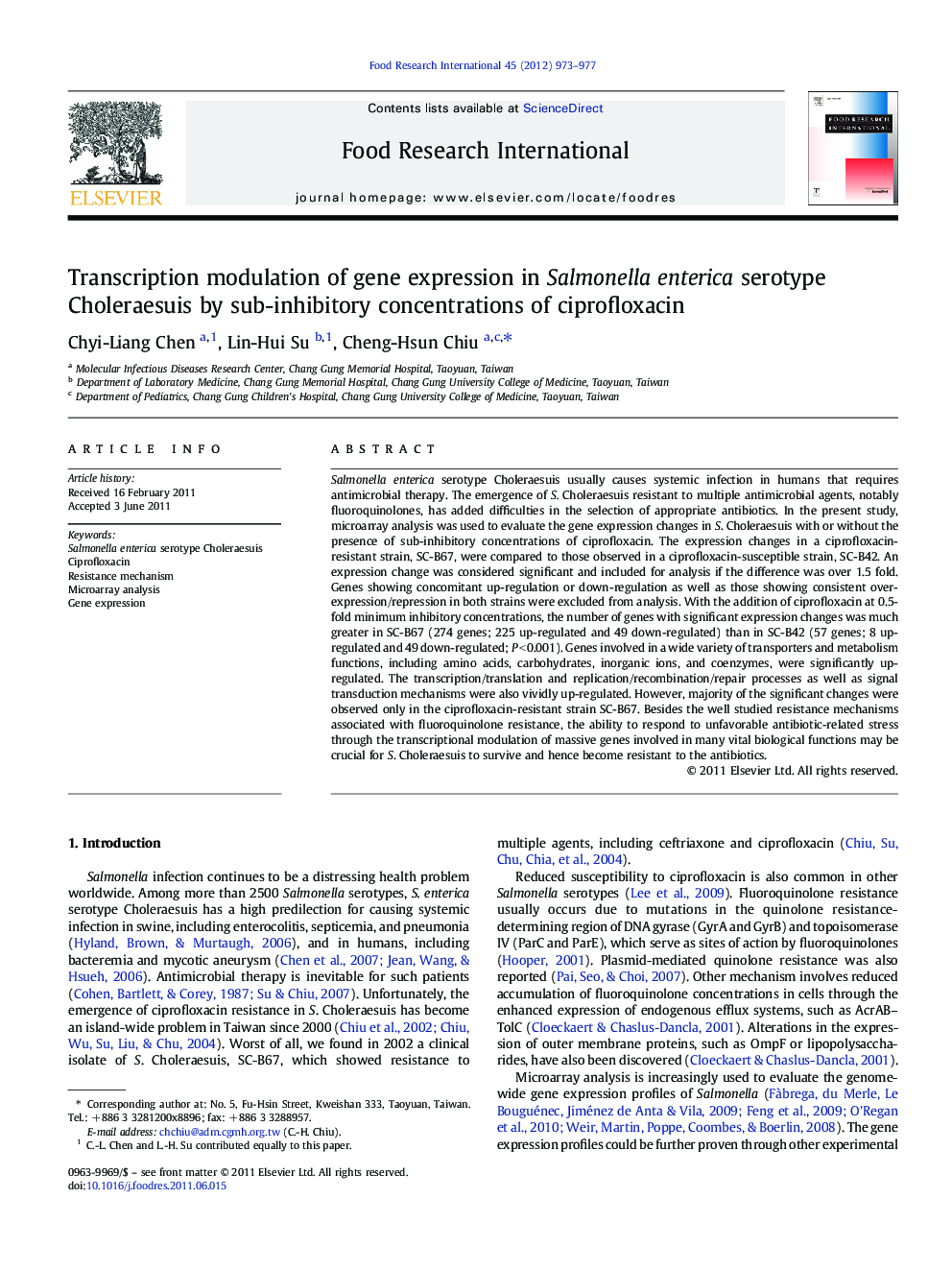| Article ID | Journal | Published Year | Pages | File Type |
|---|---|---|---|---|
| 4561755 | Food Research International | 2012 | 5 Pages |
Salmonella enterica serotype Choleraesuis usually causes systemic infection in humans that requires antimicrobial therapy. The emergence of S. Choleraesuis resistant to multiple antimicrobial agents, notably fluoroquinolones, has added difficulties in the selection of appropriate antibiotics. In the present study, microarray analysis was used to evaluate the gene expression changes in S. Choleraesuis with or without the presence of sub-inhibitory concentrations of ciprofloxacin. The expression changes in a ciprofloxacin-resistant strain, SC-B67, were compared to those observed in a ciprofloxacin-susceptible strain, SC-B42. An expression change was considered significant and included for analysis if the difference was over 1.5 fold. Genes showing concomitant up-regulation or down-regulation as well as those showing consistent over-expression/repression in both strains were excluded from analysis. With the addition of ciprofloxacin at 0.5-fold minimum inhibitory concentrations, the number of genes with significant expression changes was much greater in SC-B67 (274 genes; 225 up-regulated and 49 down-regulated) than in SC-B42 (57 genes; 8 up-regulated and 49 down-regulated; P < 0.001). Genes involved in a wide variety of transporters and metabolism functions, including amino acids, carbohydrates, inorganic ions, and coenzymes, were significantly up-regulated. The transcription/translation and replication/recombination/repair processes as well as signal transduction mechanisms were also vividly up-regulated. However, majority of the significant changes were observed only in the ciprofloxacin-resistant strain SC-B67. Besides the well studied resistance mechanisms associated with fluoroquinolone resistance, the ability to respond to unfavorable antibiotic-related stress through the transcriptional modulation of massive genes involved in many vital biological functions may be crucial for S. Choleraesuis to survive and hence become resistant to the antibiotics.
Research highlights► Microarray analysis was used to evaluate gene expression changes in S. Choleraesuis with or without the presence of ciprofloxacin. ► More genes in the ciprofloxacin-resistant strain than in the susceptible strain demonstrated significant expression changes at 0.5xMIC of ciprofloxacin. ► Genes involved in a wide variety of transporters and metabolism functions were significantly up-regulated. ► The ability to respond to antibiotic pressure through genetic transcriptional modulation is crucial for S. Choleraesuis to survive.
